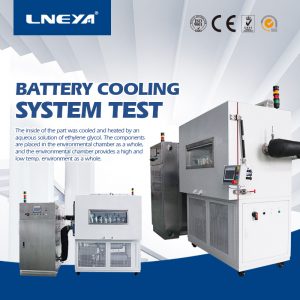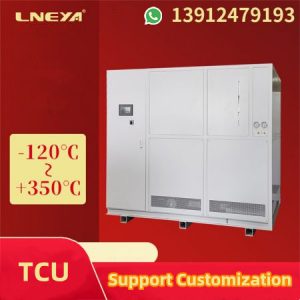Operation Instructions of Heating Cooling Circulator
Heating cooling circulator is a process that refrigerant transfers heat from low temperature state to high temperature state, so that its cooling can reach the state of low temperature environment, thus maintaining the low temperature state and realizing the refrigeration process. In the heating process of heating cooling circulator, heat is the process of heating with heat conducting oil to provide heat source, because the low temperature state is impossible to provide heat as the high temperature state.
Refrigeration cycle includes compression refrigeration cycle, absorption refrigeration cycle, adsorption refrigeration cycle, steam jet refrigeration cycle and semiconductor refrigeration cycle, etc. Heating cooling circulator of Wuxi Guanya mainly adopts compressor refrigeration cycle. In the compressed air refrigeration cycle, two constant pressure processes are used to replace the two constant temperature processes of reverse Carnot cycle, so it can be regarded as reverse Brayton cycle. In engineering application, compressor can be piston type or impeller type. After entering the compressor, the air from the heating and refrigeration cycle equipment is adiabatically compressed, and the temperature rises above the ambient temperature. Then it enters the cooler and transfers the heat to the cooling water at a constant pressure, the temperature is equal to the ambient temperature. Then the expander is introduced to adiabatic expansion, and the temperature is further reduced to below the temperature of the heating and refrigeration cycle equipment. Then it enters the heating and refrigeration cycle equipment, which absorbs heat at constant pressure (the heat absorbed is called refrigeration capacity), and completes the cycle.
After the refrigerant is vaporized and absorbs heat from the heating cooling circulator at constant pressure (at this time the working medium is usually dry saturated steam or near dry saturated steam), it enters the compressor to compress in adiabatic state, the temperature exceeds the ambient temperature, and then enters the condenser to heat the ambient medium at equal pressure. In the condenser, the superheated refrigerant vapor is first isobarically cooled to the saturated temperature corresponding to the current pressure, then continues isobaric (which is also isothermal) condensation to the saturated liquid state. It enters the throttle valve, adiabatic throttle at the throttle valve to reduce temperature and pressure to the wet saturated vapor state corresponding to the starting pressure of the cycle, and then enters the heating and refrigeration cycle equipment to gasify and absorb heat to complete the cycle.
Related recommendations
-
Maintenance instructions for compressors at minus 85 degrees ultra low temperature freezer
1636The compressor in the ultra-low temperature freezer of minus 85 degrees is one of the main components, and its performance is very important, so maintenance is also very important. For manufacturers of sub-85 degree ultra-low temperature freezer c...
View details -
Maintenance of Top 10 Industrial Freezers
1726When we choose and buy industrial freezers of top 10 brands, in addition to some necessary needs, we should also pay attention to the use and maintenance of the industrial freezer, we should select industrial freezers with long service life, high ...
View details -
New energy power car power battery detection system vacuum description
1727The new energy power vehicle power battery test checks the vacuum pump switch in the closed state before operation; when the vacuum pump is placed horizontally, ensure that the lubricating oil and the oil level line are kept horizontal; whether th...
View details -
Operation Precautions for ZLF/SR Series Reactor Temperature Control Equipment
1662The temperature control equipment of the reaction kettle adopts the PID control method, which greatly improves the temperature control accuracy of the whole machine. The microcomputer for cooling or heating will automatically switch to work accord...
View details
 LNEYA Industrial Chillers Manufacturer Supplier
LNEYA Industrial Chillers Manufacturer Supplier













